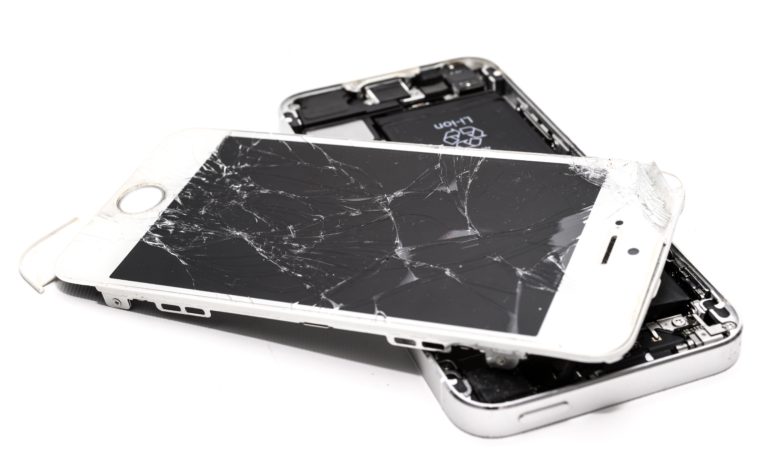Microbes Could be the Answer to the World’s Growing Electronic Waste

Fifty years ago, the concept of smartphones, tablets and desktop computers populated science fiction novels, television shows and movies. As technology rapidly advanced over the last several decades, computing power increased exponentially as the internet became an integral component of everyday life. Now, people carry electronic devices more advanced than the computers NASA used to land man on the moon.
Each year, brands like Apple, Google, Amazon, Microsoft and Sony release their latest devices. These companies host flashy presentation events inviting exclusive Silicon Valley thought leaders and board members to watch as they highlight the reasons why consumers should drop hundreds of dollars on computers, phones and tablets with only slightly improved software and hardware. As people replace their existing devices with new ones more often than they did a decade ago, electronic waste (e-waste) significantly increased.
How big is the world’s e-waste problem?
The Bureau of Economic Analysis reported in 2017 that Americans spent $71 billion on communication and television equipment. That’s five times the amount U.S. consumers spent in 2010 when adjusted for inflation.
Research indicates that in 2019, the human race created 53.6 million tons of e-waste. On average, each person disposed of more than 16 pounds of e-waste. Models project that at the current rate of electronic device disposal, people will trash 74.7 million tons of e-waste in 2030.
What happens to e-waste?
Last year, people properly disposed of or recycled only 17.4 percent of their e-waste. Europe accounted for the highest e-waste recycling rate at 42.5 percent, followed by Asia at 11.7 percent, the Americas and Oceania tying at 9.4 percent and 8.8 percent for Africa. Those numbers mean that 82.6 percent of the e-waste generated in 2019 went unaccounted for and simply disappeared to locations unknown.
Why is e-waste toxic?
The electronic devices we love so much contain various toxic elements such as mercury, lead, cadmium, polybrominated flame retardants, barium and lithium. The plastic casings of electronic products also include the toxic material polyvinyl chloride. As these toys, phones and other devices collect in landfills and break down over time, they pose severe threats to the environment.
The obvious concern about e-waste is the sheer amount of it. Landfills around the world have hit capacity for trashed electronic devices. The more of these items that people toss out, the more we need outdoor space to use as landfills.
Additionally, the toxic metals in e-waste could create a significant problem with groundwater. As these gadgets decompose, these metals leech into the groundwater. Livestock and humans alike consume this contaminated groundwater. This dangerous water also finds its way into streams, rivers, lakes and oceans, creating larger problems that require costly, demanding solutions.
Microbes to the rescue!
Unfortunately, pyrometallurgy and hydrometallurgy, the current methods for recycling e-waste, create toxic output such as gasses and effluent. They also demand numerous resources to recycle the various components of e-waste properly. That’s why many researchers started experimenting with e-waste reduction with the help of microbes.
Another phrase for microorganisms, microbes may hold the key to safely disposing of e-waste in the future via a process known as bioleaching. For decades, mining enterprises employed bioleaching to extract metals from ore. Scientists now believe this same process holds the solution for e-waste management, as it is a much greener option than current recycling methods.
In 2007, a team of environmental chemical engineers set about to solve this increasing problem with C. violaceum microbes. They began with trying to extract gold created by e-waste from ore. Seeing some success initially, the researchers created two new bacteria strains, which increased gold extra from 11 percent to 30 percent. Eventually, they were able to extra up 69 percent of gold from e-waste.
Currently, pyrometallurgy and hydrometallurgy extract nearly 100 percent of the precious metals found in e-waste, making it more effective than microbes. However, research continues into this solution, as it’s environmentally-friendly and doesn’t create additional waste, unlike existing recycling processes.
Safely disposing e-waste by preventing it
Given enough time and resources, scientists may find a way to safely dispose of e-waste without posing a threat to the health of the environments and ourselves. Until then, it’s up to us to minimize the e-waste we use as much as possible. We only have one planet to work with, and if we keep polluting it with our need for the latest devices, nothing will remain for future generations. Ensure broken or damaged electronics don’t end up in your regular trash bin and are instead recycled. Find ways to repurpose or repair these electronics, instead.

